| Botanical Name |
|
| Family |
Convolvulaceae - The morning glory family. |
| Pronunciation |
eye-poe-MEE-ah fie-sih-FOE-lee-uh |
| Common Name(s) |
English: Fig-leaved morning glory
IsiZulu: Ikhambilesihlungu; Umkhokha Wehlathi
|
| Plant Group |
- Climber / Creeper Climber: a plant that climbs using tendrils or if given support.
Creeper: a plant running along the ground, often rooting as it goes.
- Veld Flower Small veld flowers of interest, rather than for their usefulness in the garden. Some of these plants have garden potential, particularly for less formal garden situations.
|
| Plant Size |
|
| Position |
- Canopy Shade Canopy shade is found below closely grown trees where some light filters through. Ideal for the protection of herbaceous plants.
- Deep / Full Shade Shade below spreading evergreen trees where sun's rays are unable to penetrate the canopy at any time. For light sensitive plants
- Dry Shade Shady areas where soil has poor water retention or are dependent on rain for their moisture needs.
- Light or Dappled Shade Found below trees with sparse, open foliage. Ideal for the protection of herbaceous plants.
- Partial Shade The area is in shade for part of the day and in full sun for part of the day.
|
| General Information |
- Drought Tolerance: High The plant is well adapted to arid conditions; it can survive long periods of drought and high temperatures without extra water.
- Water Wise Plant species originating from low rainfall regions that require less water to survive and thrive than other plant species.
|
| Specific Information |
This morning glory travels along the ground, twining up and into shrubs and trees. Flowers last for only a few hours but are replaced each day. The leaves are deeply lobed. Ipomea ficifolia is an indigenous alternative to the common Morning Glory (Ipomoea indica), which is a category 1 invasive plant in South Africa.
|
| Ad Break |
|
| Flowers |
| Description |
|
| Season |
- Summer to Autumn Plants will seldom bloom for the entire season as given in the list, but should flower during a period within these parameters.
|
| Colour |
|
| Growth Rate |
- Very Fast Specifying growth rate can be very misleading as there is considerable variation of growth rate depending on type and species of plant, available water, supplementary feeding, mulching and general care, as well as the plants suitability and adaptability to the garden environment.
|
| Plant Uses |
- Attracts bees, butterflies or other insects This plant attracts insects which can be food for birds or other creatures in your garden.
- Boundary A plant useful for planting around the edges of the property to form a green or colourful backdrop, an impenetrable hedge, to hide walls or create privacy.
- Suitable for coastal gardens Plants adapted to dry, sandy soil, forceful wind, limited rainfall and intense sunlight.
- Wild Garden An indigenous garden planted for the benefit of wildlife and birds. Provides food, water, a variety of mini-biomes and no poisonous chemicals are used.
|
| Distribution and Habitat |
Bathurst to KwaZulu-Natal, along edges of forests in shade or sun, in disturbed places, in hedgerows and among shrubs
|
| Planting Suggestions |
Plant seed in a shady spot under shrubs or along a boundary or hedgerow. I have found it necessary to guide this plant into the shrubbery, otherwise it travels along the ground, rooting as it goes. It really depends on where you want it to go.
|
| Medicinal Uses |
The leaf is said to be used as a purgative, to treat indigestion and as a snake-bite remedy.
|
| Ad Break |
|


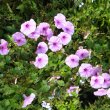
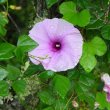
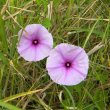
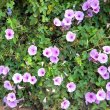

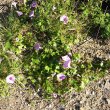
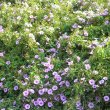
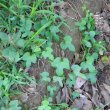


Discuss this plant
Share knowledge, ask a question or give an experience.